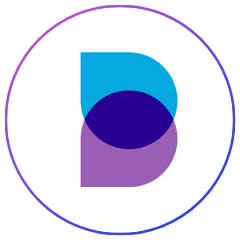Thousands of Canadians are turning to Employment Insurance (EI) for support. You might be wondering: how does EI work? How do you apply for EI? Does EI affect your credit score? Do I qualify? We’re here to help explain how EI works and how it impacts your finances.
If you’ve lost your job due to COVID-19, you can check our list of available government supports. EI eligible applicants and those that have applied from March 15 will be directed to CERB. It is currently unknown whether those with higher payments will receive EI or CERB amounts.
Am I eligible for Employment Insurance (EI)?
If you’ve been laid off from your job, Employment Insurance (EI) is provided by the government to help support you financially while you look for employment.
You can receive EI for a period of 14 weeks, to a maximum of 45 weeks. How long you get support is determined by the unemployment rates in your area and the number of insurable hours you’ve worked.
What are Insurable Hours?
Insurable hours are the confirmed number of hours you’ve worked and should be provided by your previous employer (Record of Employment (ROE). EI applies if you’ve worked in an insurable job for between 420 and 700 hours in the past 52 weeks before you apply. You can see how many weeks you may qualify for here.
How much do I get from EI?
For most people, EI is around 55% of your average insurable weekly earnings, with the maximum you can receive capped at $573 a week.
Where does the EI money come from?
When you work in an insurable job, that means your employer deducts an EI contribution from your wages, so you can get benefits when you need them most (think of it like an insurance policy). That’s also why there is a minimum requirement of insurable hours worked in order for you to be eligible.
Every year the contribution rate and maximum insurable earnings change. Currently (2020), the federal deduction rate is 1.58%, so for each $100 you have earned, $1.58 was deducted as the EI contribution. This rate is applicable for a maximum annual insurable earnings amount of $54,200, which means the maximum annual EI contribution would be $856.36 to the EI Account.
Find out more about the premium rates for Canada and Quebec.
How do I know if I’m eligible for EI?
You were employed in insurable employment and you lost your job through no fault of your own
That means you are not eligible for EI if you were terminated with cause, such as misconduct. You’re also ineligible if you voluntarily left, or quit without cause. However, exceptions can be made if you left voluntarily; examples of this could include proof of workplace harassment
You worked for the required number of insurable employment hours (between 420 and 700 hours depending on your region) in the last 52 weeks prior to your application
You are willing, ready, and capable of full-time employment
You’re actively looking for work, with a written record of contacting employers (applying for jobs)
Typically, you would have to be unemployed and without pay for seven days before applying (called the ‘waiting period’), but during emergencies like COVID-19, this period can be waived.
How do I apply for EI?
It’s important to apply for EI as soon as you become unemployed. If you wait too long, you could risk losing your benefits. You can apply even if your employer has not issued a Record of Employment (ROE) yet on your behalf. For the application, you need to have the following:
Your Social Insurance Number (SIN)
If your SIN begins with a 9, you may need to supply proof of your immigration status and work permit
Your mother’s maiden name, or last name
Your mailing and residential addresses, including postal code
Your complete banking information to sign up for direct deposits, which includes:
The financial institution name (such as RBC)
The bank branch or transit number, which you can find on your bank statement
The account number, which should also be on your bank statement
Names, addresses, dates of employment, and reason for separation with all of your employers in the last 52 weeks
Your detailed explanation of the situation (if you have quit or been dismissed from the job)
The dates and earnings for each of your highest-paid weeks of insurable earnings in the last 52 weeks in order to help calculate your benefit rate
After you have gathered that information, you can begin your online application. You will be provided with detailed step-by-step instructions to guide you through. Make sure you put aside at least one hour to complete the process.
If you’re approved, you should receive your first payment within 28 days after submitting your application and documents. If you are not approved, you will be provided with a written explanation or get a phone call.
People who are not approved for EI can apply for other government support programs, such as the Canada Emergency Response Benefit (CERB). Read more on the CERB and other government supports.
What do I do while receiving EI?
You have certain responsibilities while receiving EI benefits. Service Canada will mail you a benefit statement, which includes a 4-digit access code-- keep this number handy and safe. You’ll be asked to log into your account and complete a report every two-weeks to prove your eligibility. This is VERY IMPORTANT. If you don’t you could risk your benefits. Reports can be completed online using the Internet reporting service, or by calling 1-800-531-7555.
Do families receive any extra help?
Low-income families may be eligible for a family supplement to EI benefits. If your net family income, or family income after taxes and deductions, is lower than $25,921 per year, and you have children or your spouse receives the Canada Child Benefit (CCB), then you could receive EI benefits of up to 80% of your average insurable earnings. No application is needed, as the supplement is automatically applied with EI.
It’s important to note that this family supplement can only apply to one income in the household. That means if your family is eligible, only one person could receive 55% and the other could receive up to 80% of the average insurable earnings. However, benefits are capped at a maximum of $573/week per person.
What if I can’t work for medical reasons?
Sickness benefits are available for up to 15 weeks if you can’t work due to illness. The benefit is 55% of your average weekly earnings, up to $573/week, which is the same as regular benefits. Typically, a medical note would be required to document the medical reasons for why you can’t work, but during emergencies such as COVID-19, the required medical note is not necessary.
To be eligible, you must show you are unable to work due to a medical reason and your regular weekly earnings have dropped by more than 40% for at least one week. You also need to have accumulated more than 600 insured hours of work in the last 52 weeks prior to your application.
The application process for EI sickness benefits is nearly identical to the application for EI regular benefits; you can access it here.
Does EI affect my credit score?
The short answer is no, EI should not directly impact your credit score as EI is a benefit, not a debt. However, your credit score is impacted by not paying off bills on time, credit card balances, and loans, among other things. If you are struggling you may want to look at payment deferrals or refinancing to help you transition through this period.
It’s important to monitor and protect your score while you are going through this challenging time. You can sign up for free in just a few minutes and won’t impact your credit score.
The Bottom Line
Unemployment is tough, both emotionally and financially. The team at Borrowell is committed to providing you with up-to-date resources and useful tools to help you stay informed.
If you’ve lost your job as a result of COVID-19, you can see what other government supports are available.

Trusted by over 3 million Canadians, Borrowell provides free weekly credit scores and report monitoring, personalized financial product recommendations and affordable tools to help you build your credit. Sign up for your free Borrowell account today on borrowell.com, or download the mobile app for Android or iOS.




